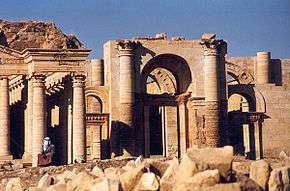240
| Millennium: | 1st millennium |
|---|---|
| Centuries: | 2nd century · 3rd century · 4th century |
| Decades: | 210s · 220s · 230s · 240s · 250s · 260s · 270s |
| Years: | 237 · 238 · 239 · 240 · 241 · 242 · 243 |
| 240 by topic | |
| Politics | |
| State leaders – Sovereign states | |
| Birth and death categories | |
| Births – Deaths | |
| Establishment and disestablishment categories | |
| Establishments – Disestablishments | |
| Gregorian calendar | 240 CCXL |
| Ab urbe condita | 993 |
| Assyrian calendar | 4990 |
| Bengali calendar | −353 |
| Berber calendar | 1190 |
| Buddhist calendar | 784 |
| Burmese calendar | −398 |
| Byzantine calendar | 5748–5749 |
| Chinese calendar | 己未年 (Earth Goat) 2936 or 2876 — to — 庚申年 (Metal Monkey) 2937 or 2877 |
| Coptic calendar | −44 – −43 |
| Discordian calendar | 1406 |
| Ethiopian calendar | 232–233 |
| Hebrew calendar | 4000–4001 |
| Hindu calendars | |
| - Vikram Samvat | 296–297 |
| - Shaka Samvat | 161–162 |
| - Kali Yuga | 3340–3341 |
| Holocene calendar | 10240 |
| Iranian calendar | 382 BP – 381 BP |
| Islamic calendar | 394 BH – 393 BH |
| Javanese calendar | 118–119 |
| Julian calendar | 240 CCXL |
| Korean calendar | 2573 |
| Minguo calendar | 1672 before ROC 民前1672年 |
| Nanakshahi calendar | −1228 |
| Seleucid era | 551/552 AG |
| Thai solar calendar | 782–783 |
| Wikimedia Commons has media related to 240. |

Hatra ruins
Year 240 (CCXL) was a leap year starting on Wednesday (link will display the full calendar) of the Julian calendar. At the time, it was known as the Year of the Consulship of Sabinus and Venustus (or, less frequently, year 993 Ab urbe condita). The denomination 240 for this year has been used since the early medieval period, when the Anno Domini calendar era became the prevalent method in Europe for naming years.
Events
By place
Roman Empire
- The Roman Empire is threatened on several fronts at the same time. Africa revolts and tribes in northwest Germania, under the name of the Franks, are raiding the Rhine frontier.
Asia
- April 12 – Shapur I becomes co-emperor of the Sasanian Empire with his father Ardashir I.
- Maharaja Sri-Gupta becomes Emperor of Gupta.
- Ardashir I, Sassanid king of Persia, destroys Hatra.
- The Kushan Empire falls.
By topic
Religion
- At the court of Ardashir I, Mani, a young mystic of Ctesiphon, proclaims himself a prophet and preaches his doctrine, Manichaeism, throughout the Persian Empire.
Births
- Lactantius, Christian writer (d. 320) (approximate date)
- Sporus of Nicaea, Greek mathematician and astronomer (approximate date)
- Zenobia, queen of the Palmyrene Empire (d. 274)
Deaths
- Ammonius Saccas, Neoplatonic philosopher (approximate date)
- Huang Quan, general of the state of Shu Han
References
This article is issued from Wikipedia - version of the 7/26/2016. The text is available under the Creative Commons Attribution/Share Alike but additional terms may apply for the media files.